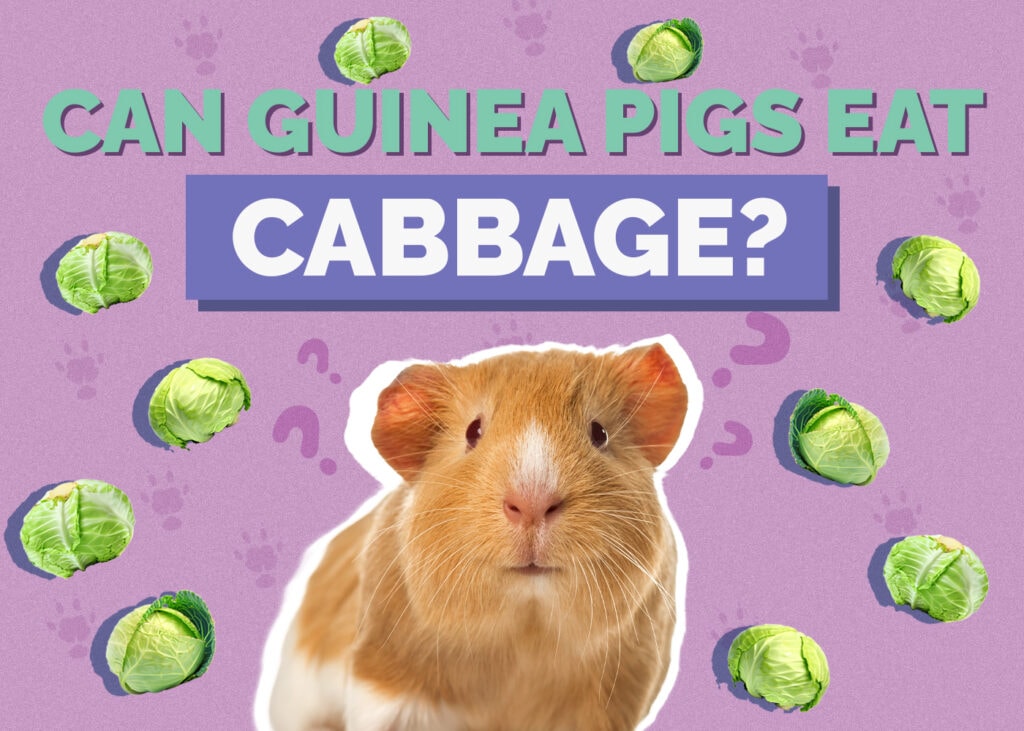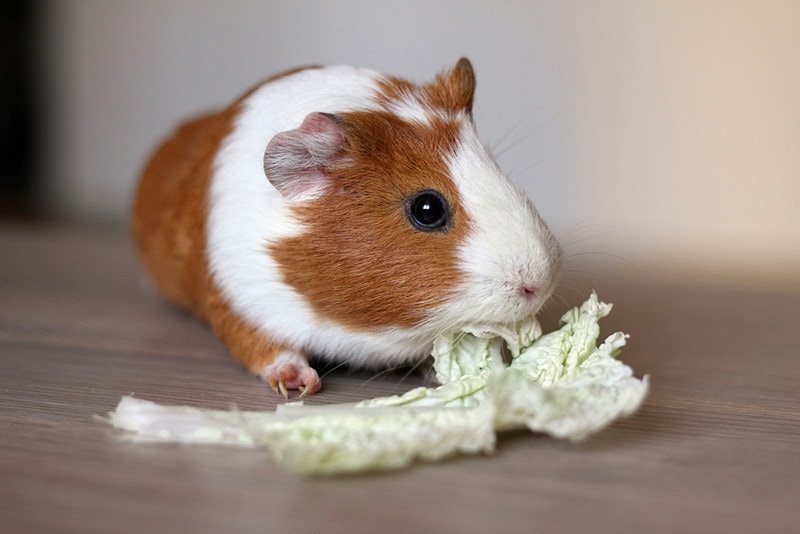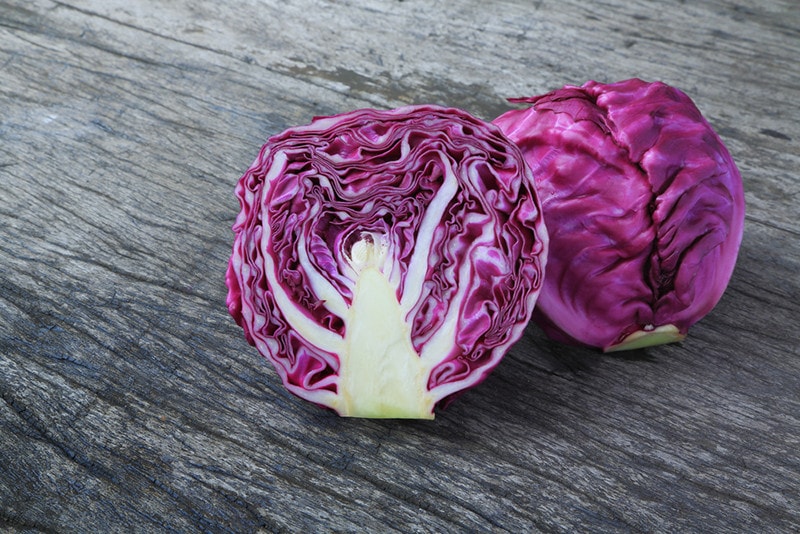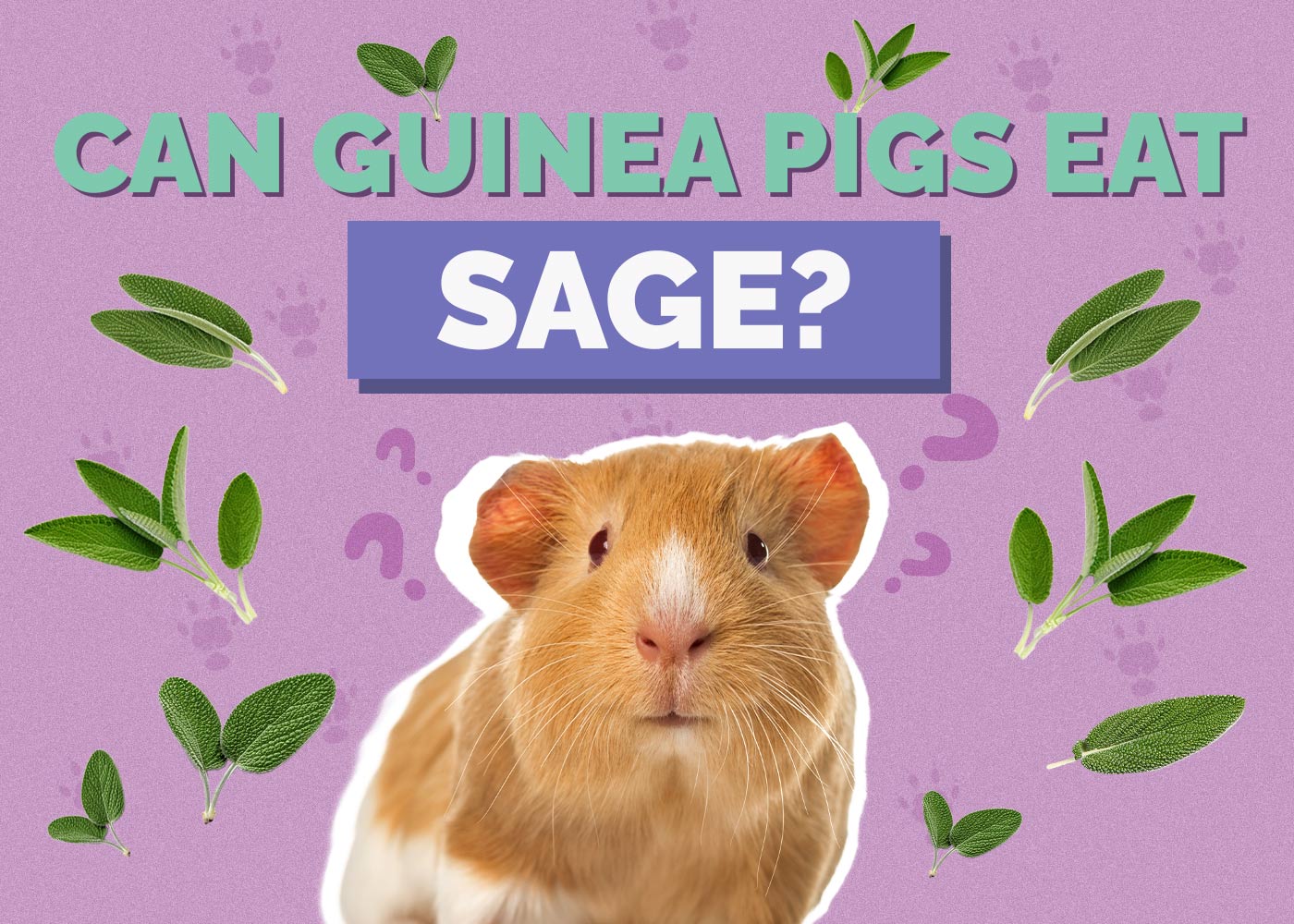Can Guinea Pigs Eat Cabbage? Vet Approved Nutrition Facts & FAQ

Updated on

Yes, Guinea Pigs can eat cabbage! In the wild, Guinea Pigs would spend their time eating the leaves, berries, and other parts of plants, as well as a lot of grass and hay. When kept as pets, they need a similar diet to ensure that their nutritional requirements are being adequately met. When creating a diet plan for your Guinea Pig, as well as ensuring that it gets adequate vitamins and minerals, you also need to provide enough roughage for them to chew.
Guinea Pig teeth grow continuously, and they are worn down through the constant chewing of grass and hay. You can also feed a good variety of greens and vegetables, including cabbage. There are different varieties of cabbage, and each has a different ratio of vitamins and minerals, but all contain some vitamin C, fiber, and calcium, at the very least.
However, cabbage should be fed in moderation. Too much cabbage can cause diarrhea and it may also lead to kidney stones and urinary infections.
Guinea Pig Diet
Like any pet, a Guinea Pig needs to be fed a nutritional diet that contains the vitamins and minerals it needs,. and there are a number of food sources you can give a Cavie to safely (and tastily) meet those requirements.
Commercial foods are widely available and should be tailored specifically to the needs of your pet. Pellets are easy to feed, are shelf stable, so they don’t go off quickly, and can be fortified with vitamin C. Do make sure you buy pellets specifically made for Guinea Pigs, and don’t assume that a hamster or other food will do.
Commercial pellets should be secondary to the feeding of hay, which needs to account for around 75% of their daily diet. Timothy hay is considered the best option because it contains good levels of fiber that aid in digestion and help fill your Cavie up.
Finally, offer fresh vegetables once a day. It is good practice to feed different greens every day, and you can feed suitable amounts of other fruit and vegetables including bell peppers and carrots. You can also add herbs like marjoram, rosemary, and parsley to the daily vegetable list.
Fruit should only be given as a treat a few times a week and in moderation. Although fruit generally contains essential minerals and vitamins, particularly Vitamin C, it is also high in natural sugars, which can lead to obesity and diarrhea.

So, Can Guinea Pigs Eat Cabbage?
Cabbage is generally considered a good vegetable to feed Guinea Pigs. It is crunchy, great for their teeth, and a lot of Guinea Pigs appreciate its texture. Cabbage shouldn’t make up the whole of your Guinea Pig’s vegetable allowance, however.
The Benefits of Cabbage
Cabbage is not only safe for Guinea Pigs, but it does offer certain benefits, although different types of cabbage are considered more beneficial than others.
- Vitamin C – Like in humans, vitamin C helps stave off infections and fight illnesses. It is critical to the immune system, and it can also help repair injuries and damage.
- Fiber – Fiber is critical to all animals and especially to Guinea Pigs. It not only gives a full feeling that can stop overeating, but it also keeps stools moving and ensures good digestion. Fiber can also lower cholesterol and blood sugar.
- Calcium – Calcium helps bones grow and ensures that they stay strong. Guinea pig pups need plenty of calcium to help their bones grow, whilst aging Guinea Pigs need a lot of it to help repair and rebuild their bones. Pregnant sows also need calcium to support the unborn pups and to pass on in their milk. Too much calcium in the diet can be harmful, so be careful if feeding it alongside other foods rich in calcium such as kale, collard greens or radish leaves.

The Pitfalls of Cabbage
Cabbage can be a beneficial addition to your Guinea Pig’s diet, but there is such a thing as too much of a good thing. Too much cabbage can cause diarrhea and because the vegetable is high in calcium, it can also cause urinary infections and kidney stones. Therefore, you should limit cabbage to 2-3 times per week.
Which Is the Best Cabbage to Feed?
There are different varieties of cabbage, and each has its own vitamin and mineral levels. Red cabbage has the highest vitamin C levels, followed by Napa cabbage. Savoy has the highest fiber, followed by green cabbage. And Napa cabbage has substantially higher levels of calcium, with red cabbage in a distant second.

How to Feed Cabbage to Your Cavie
Only feed cabbage to your Guinea Pig 2-3 times a week. Start with a half leaf of your chosen cabbage and feed this in one go. Let the Cavie finish the cabbage and keep an eye out for any adverse effects such as diarrhea. If all goes well, you can increase the amount you feed and give a whole leaf next time. Generally, you shouldn’t need to feed more than one whole leaf at any single sitting.
 Conclusion
Conclusion
Vegetables need to be a regular addition to your Guinea Pig’s diet. This can include a good variety of different green vegetables. One vegetable you can feed, although not every day, is cabbage. Any of the four main varieties: white, red, Savoy, and Napa cabbage, are considered safe but you should only feed up to one leaf per sitting and only once or twice a week.
This will provide good levels of vitamin C and fiber while hopefully avoiding diarrhea and urinary infections that too much cabbage can cause. Cabbage and other vegetables should be supplemented with the feeding of commercial food pellets and good-quality hay.
Related Read:
- Can Guinea Pigs Eat Zucchini? Vet-Reviewed Diet Facts
- Can Guinea Pigs Eat Green Beans? Vet-Approved Nutrition Facts
Featured Image Credit: stanbalik, Pixabay











